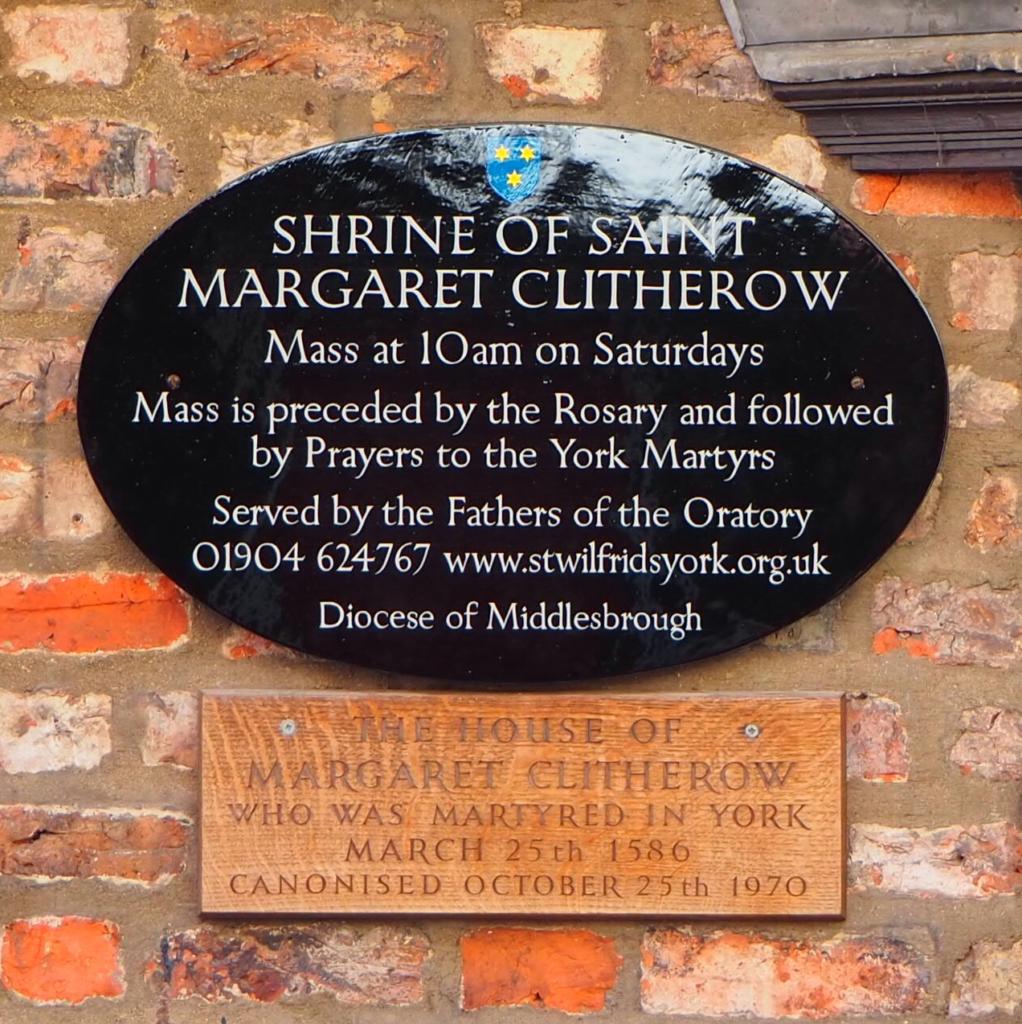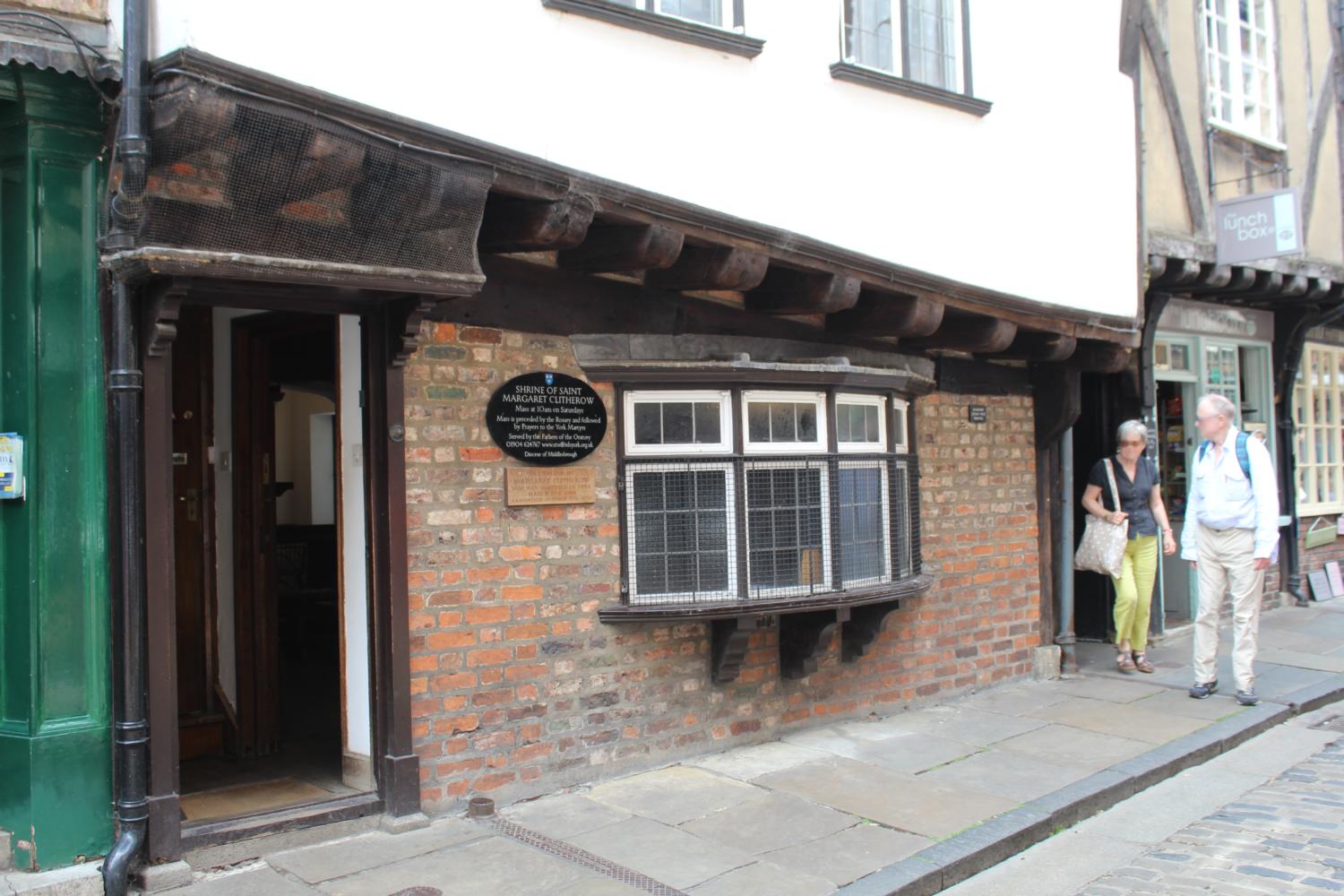For this month’s Time Travel we’re going way back to the year 1556, when Thomas and Jane Middleton gave birth to a baby girl that we know today as Margaret Clitherow. Margaret’s story is a tale of religion, self-sacrifice and bravery, and is a truly harrowing tale to have once befallen on our beloved city of York.
After marrying her wealthy and prosperous butcher husband John Clitherow, Margaret made a drastic decision to convert to Catholicism in the year 1574. In our current world, this would be no big deal. Today, we’re fortunate enough to be part of a country that’s supportive, open, and accepting of all different kinds of religions, beliefs and preferences.
But poor Margaret lived in the 1500s, and this was a time where the Jesuits, etc. Act of 1584 was active. This Act forced all Roman Catholic priests out of the country within 40 days, or they’d be punished for high treason – unless they swore an oath to obey the Queen within those 40 days. Anyone who knew of their presence, and didn’t let the authorities know, would be fined, imprisoned, or even executed.
This is where Margaret Clitherow’s legendary tale began. She defied the law and risked her life by hiding priests in two chambers – one in the Shambles where she lived, and one in a property that she rented further away. Mass continued to be celebrated, and some of her priests were killed for their beliefs, or martyred. And get this. Goodie Two-Shoes Clitherow over here prayed for the same thing to happen to her. Sources suggest that she actually went on pilgrimages praying to one day become a martyr.
It wasn’t exactly The Many Adventures of Winnie the Pooh to begin with, but the happy ending to Margaret Clitherow’s story was somewhat delayed.
Like all good secrets, the truth always surfaces. Margaret’s chambers were eventually discovered when a scared young boy gave away the location during a raid in 1586.

Margaret faced her trial at the beautiful Guildhall. And while we’re not entirely sure why – although it seemed she was trying to stop her children and servants from having to testify – Margaret refused trial by jury and thus headed straight for execution. And not just any execution. She was sentenced to be pressed to death – but this threat didn’t persuade Margaret to change her ways. Protestants visited her, asking her to confess that she was pregnant, but she continued on with her punishment.
On the 25th March 1586, Margaret’s punishment came to be, as she was pressed under 7-8 hundredweight. She was said to have arrived at her execution with a smile and an air of calmness, knowing that she was dying for her Catholic faith. Some even believed Margaret may have been mad, given her remarkable ability to accept the situation with such positivity. Her last words were said to have been: “Jesu! Have mercy on me!”
And Margaret continued to pass on her thoughts and wishes after her death, through the gifts she handed over to her husband and daughter. Husband John received Margaret’s hat, which acknowledged his authority; and daughter Anne was given her stockings and shoes – a metaphor said to encourage Anne to follow in her mother’s footsteps.
Margaret’s story continued long after her death. Despite being buried secretly in waste, in the hope that she’d never be found, a group of Catholics found her, embalmed her, and gave her the burial she deserved. But secrecy seemed to be a common theme for Mrs Clitherow, as her eventual burial place was so carefully guarded that no one is now said to know where she lays. That being said, a relic, thought to be Margaret’s hand, resides at The Bar Convent on Blossom Street.

Now, we promised you a happy ending. For Catholicism everywhere, Margaret’s death was not in vain. She was beatified, meaning her entrance to Heaven was recognised for others to pray to, by Pope Pias XI in 1929. She was then canonised, or declared as a saint, in 1970 by Pope Paul VI as one of the Four Martyrs of England and Wales.
St Margaret’s Shrine, said to be situated opposite her house, resides at 35-36 Shambles. Schools all over the country, including Manchester, London and Middlesbrough, are named after Margaret Clitherow; and her name even spread to Ohio, USA at the St Margaret of York Catholic Church.
So here’s your happy ending: Remember how we said that Margaret would set off on pilgrimages to pray that she would one day become a martyr? Well Margaret, your prayers were answered.
Now, we do have to state that the 1500s were a long time ago. There was no internet. Documentation was minimal. We know there’s a lot of conflicting information about the facts surrounding Margaret Clitherow, so we’ve kept our story quite simple. Are you a keen historian? Do you know some facts that we’ve missed? Drop us a comment below.
Fancy experiencing the Margaret Clitherow experience for yourself? Head to the York Dungeon where you’ll get to see exactly* what it was like. Visit www.thedungeons.com/york for more information.
*Maybe not exactly. Artistic licensing.
References











Add a comment